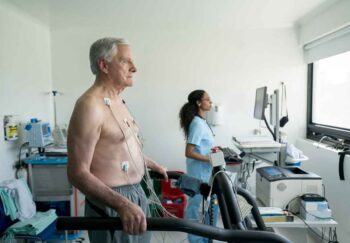No one thinks of the heart as a sex organ. Nor should they; it isn't one. But it's also true that biological sex impacts the kinds of heart issues and symptoms people experience. That is, women often have symptoms that don’t typically come with heart disease. And when it comes to spontaneous coronary artery dissection (SCAD), not only does it mostly affect women. Because the symptoms are so generic, they often get overlooked, putting even young women, and even pregnant women, at risk of a SCAD heart attack.
Take Your Symptoms Seriously
The medical establishment historically studied only men when doing research. People generally didn't question if the male experience was universal. This means that generations of doctors learned to look for symptoms in everyone that we now know only happen in men.
As a female, the symptoms of a heart issue include:
- Fatigue
- Jaw pain
- Shortness of breath
- Anxiety
Some doctors might not know to take these symptoms seriously. This can lead to an incorrect — or even missed entirely — diagnosis.
Which is why understanding what to watch for could save your life.
As a woman, you shouldn’t have to convince your doctor that your symptoms are real, says Patricia Rodriguez-Lozano, MD, director of the Women’s Heart Care Program at UVA Health. But the reality is, you might have to.
What Is SCAD?
SCAD refers to a sudden tear in the wall of an artery in the heart. When a tear occurs, blood passes through the innermost layer of the artery. The blood can get trapped and swell inward. This narrows or blocks the passageway. This can lead to a SCAD heart attack.
According to Rodriguez-Lozano, 95% of SCAD cases occur in women. The heart condition is also the culprit behind up to 35% of heart attacks in women under 50. Not to mention SCAD is the leading cause of heart attack in pregnant women. Yet some people — even some doctors — either don’t know about it or don’t know that heart problems can look different in women.
“Education is the first step toward empowerment,” she says. “When women understand how their heart disease differs — not only in symptoms but also in risk factors, diagnostic tools, and treatment — they are better equipped to advocate for the care they need.”
Symptoms of SCAD
The exact cause of SCAD isn’t known. And while the condition can develop in anyone, it tends to affect younger, otherwise healthy women. Because of this, symptoms are sometimes blamed on anxiety or musculoskeletal issues. That can lead to delays in diagnosis and treatment, Rodriguez-Lozano says.
“SCAD is often triggered by emotional or physical stress, postpartum hormonal changes, or intense exertion — and can present with subtle symptoms that don’t resemble a ‘classic’ heart attack,” she says. “Unfortunately, many women with SCAD are initially misdiagnosed or dismissed.”
Because SCAD isn’t caused by plaque buildup, it doesn’t always show up on standard tests. In fact, procedures like coronary angiography (a fancy phrase for taking a picture of the heart’s blood vessels) may make the tear worse.
Could You Have a SCAD Heart Attack?
Heart attacks and heart disease show up differently in women.
The Importance of Advocacy
SCAD isn’t common. So it’s important to work with a care team that has experience helping women with heart conditions.
“Every woman should know that SCAD is real, it’s serious, and it deserves specialized, compassionate care,” Rodriguez-Lozano says. “Knowing about SCAD — and recognizing that it needs expert care — can be lifesaving .”


